Make “working together” work better.
Pair work, group work or teamwork are all frequent features of classroom practice across every age range. The role of collaborative learning is the co-construction of learning; to make meaning together. For this to be successful students will need to ‘live’ being collaborative throughout their time in school; to be offered many opportunities to find out, try out, and learn about how to use and improve their collaborative skills.
Collaborative learning has all sorts of aspects; it’s a complicated learning habit that hinges on skilful social interaction. How well we get on together; whether we are patient with others, listen carefully and respect their views; how we are able to bounce off others to build ideas; how we learn to be part of a team and take on different roles when needed; how we contribute to the process of actually getting things done, rather than just being there but doing nothing helpful; how we contribute to improving team performance by evaluating not just outcomes but the process of getting there.
The new Ofsted framework makes reference to collaboration as part of developing students’ character:
“Developing pupils’ character, which we define as a set of positive personal traits, dispositions and virtues that informs their motivation and guides their conduct so that they reflect wisely, learn eagerly, behave with integrity and cooperate consistently well with others. This gives pupils the qualities they need to flourish in our society.”
Given the importance of growing a collaborative habit for learning and life, and given this new focus in the Ofsted framework, now seems an appropriate time to revive this key learning habit. In coming weeks we will take a look at:
- Collaboration: getting to know you
- Collaboration: learning the language
- Collaboration: growing and reflecting
This week we look briefly at beliefs about collaboration and the classroom culture to nurture it.
1. Convince yourself that collaboration is an important learning behaviour.
Developing a collaborative learning culture is helped by your understanding of and belief that:
- Learning is building knowledge and understanding through doing things with others
- Learning with and through others depends on constructive dialogue and effective collaborative skills
- Teamwork needs to be purposeful and carefully structured
And through a collaboration friendly culture students will come to believe that:
- ‘I can trust my peers to help me to learn.’
- ‘I can contribute to the learning of my peers.’
Note down your beliefs about the value of collaborative learning behaviours.
Do they convince you of its importance?
2. Don’t assume the development of collaborative learning habits just happens.
- Development of effective collaborative habits is a lengthy process
- Students need to become conscious of positive and negative behaviours
- How do you counteract negative collaborative behaviours?
- Would such behaviours count as low level disruption?
- Do your students become increasingly effective collaborators as they move through your school?
- What makes you say that?
- What do you currently do in school to actively enable students to develop these social learning skills?
- What might you be doing that inhibits collaborative learning?
3. Initially, make your students aware of collaborative behaviours so that they realise their importance for their learning.
Explain/notice/talk about what collaborative behaviours are like i.e.
- How we interact socially in learning and working with others.
- The way in which we learn the social conventions of behaving in a group
- Taking turns to speak and contribute, and what happens when we don’t
- Listening to understand others
- Being patient with others and not hogging the limelight
- Stepping outside our own concerns and building the confidence of others
- Respecting their views
- Being able to manage and overcome the inevitable controversy as teams work creatively together
- What image would you choose?
- How would you re-phrase point 3 for different age groups?
- Which of these facets of effective collaborative skills would you add when to your curriculum?
4. Create a collaborative classroom culture
‘Culture’ concerns the details of the micro-climate that you create in your classroom. What you do and say, what you notice and commend and what you don’t, what kind of role model of a learner you offer. The micro-climate of a classroom can inadvertently stifle, or specifically enhance, the very behaviours you are seeking to promote.
- Ensure high levels of inclusion, acceptance, affection, support, and trust to build group cohesion
- Create opportunities for students to resolve conflict and build consensus
- Help controversy and conflict to be seen as a positive key to students’ involvement, the quality of decisions and the continuance of the group in good working conditions
- Design group work activities to provide opportunities to experience different methods of decision-making
- Encourage students to extend the range of roles that they adopt when collaborating
- Help students to reflect on and evaluate their individual contribution to the group’s progress
- Which of the above are flourishing in your classroom? Which might you need to work on?
5. Use an ‘old faithful’ activity with more collaborative purpose in mind
This well known routine is one you could use to prepare students for working together in teams. It requires students to:
- First think things through for themselves (Think)
- Check their ideas out with a trusted friend (Pair)
- Before moving on to contributing to a group (Share)
At point 2 & 3 students are:
- Sharing their ideas with others and understanding their own thoughts better through sharing them with others
- Exposed to the views of others which encourages them to…
- Revise or refine their initial thinking.
Remember to give students enough time to THINK before sharing. We find that this is most often the part of the activity that gets given short shrift.
Bring out the underlying features of the activity that helps students first to think and then to amend or stick with their ideas.
Look ahead
- Which of the above would raise the profile of collaborative skills with your class or group of students?
- Which of the ideas are you thinking of trying out?
- Make a plan for what you will try in the next month
- Notice what happens as you make the changes.
- Build up your observations of students’ accumulating skill over time.
Next week we will explore how you can start putting collaboration into action in your classroom. We would love to hear about any of your trials and triumphs, tricks of the trade, or tripping points when putting collaboration into practice; contact us here or on our Facebook page.


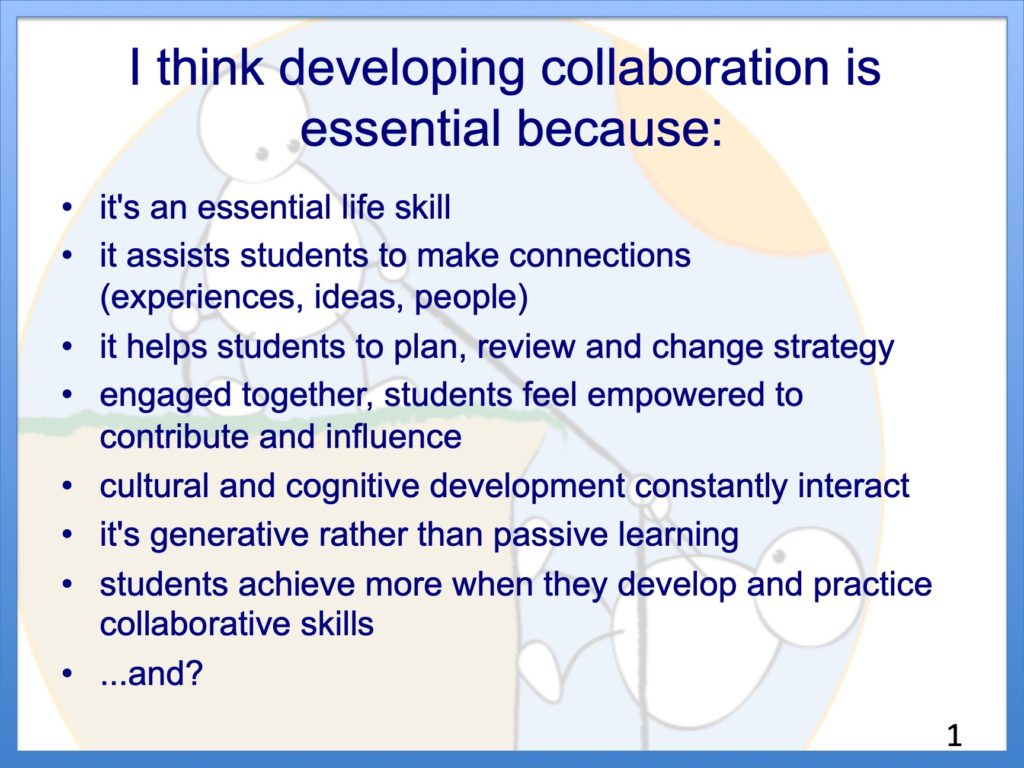
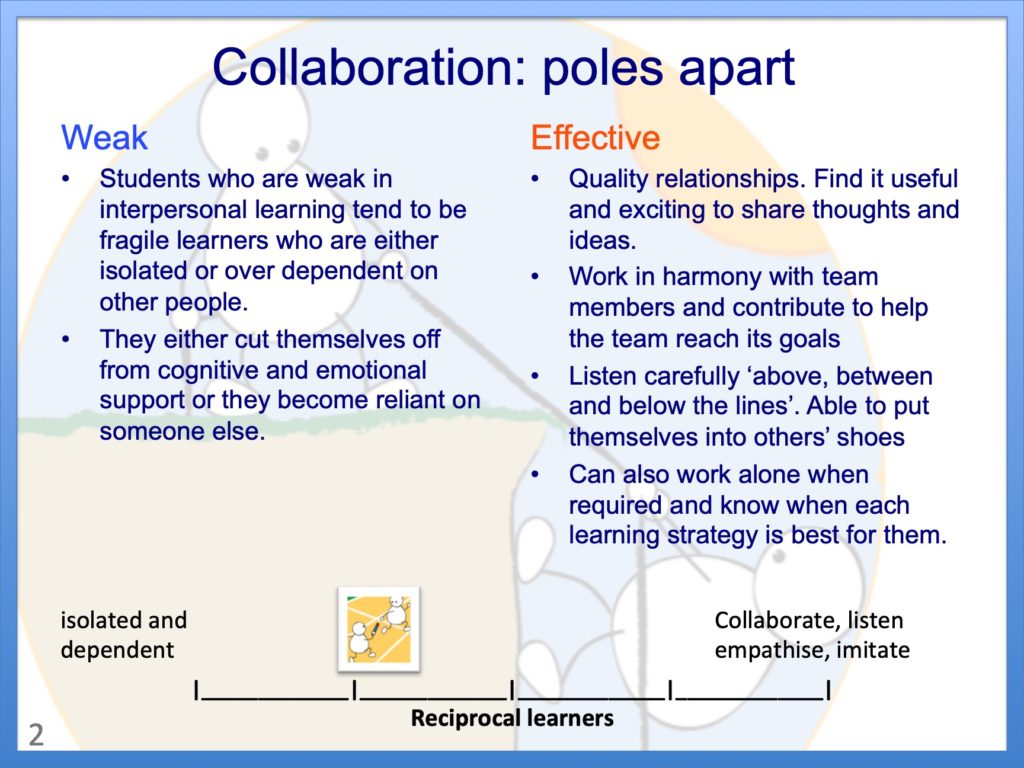
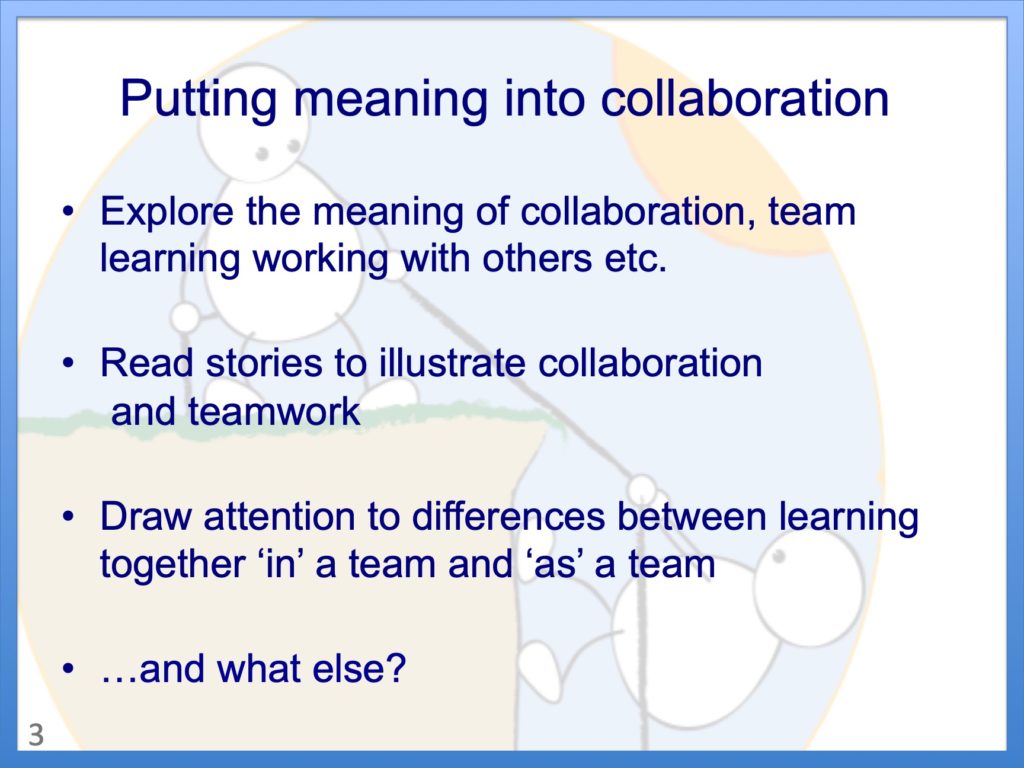
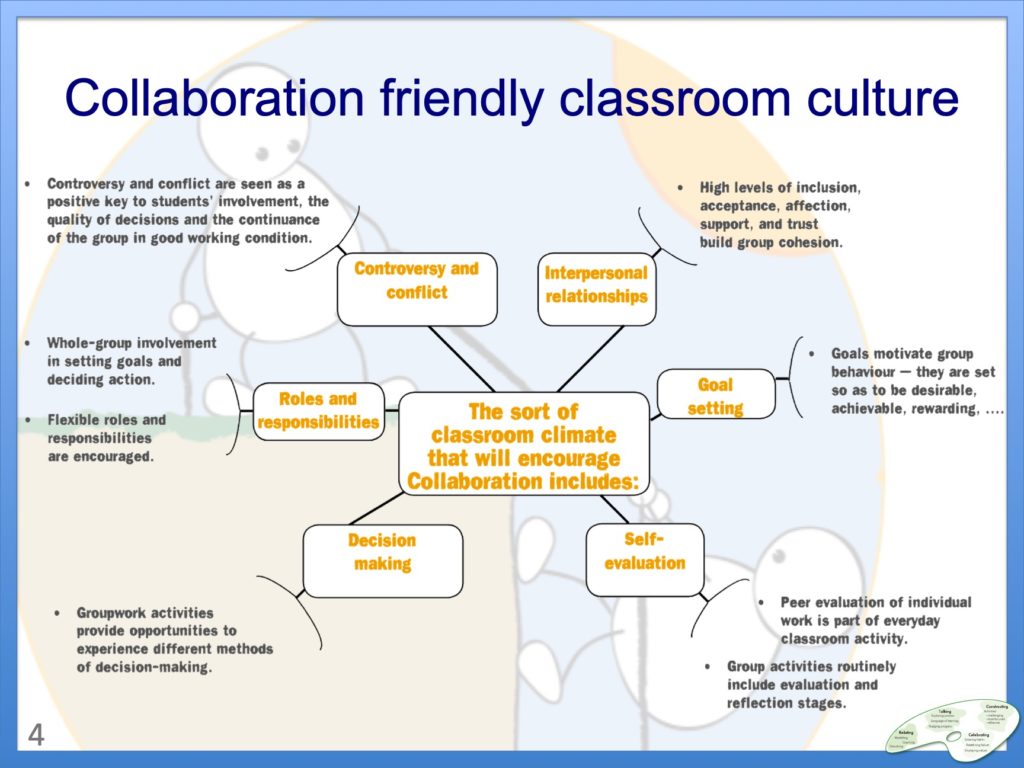
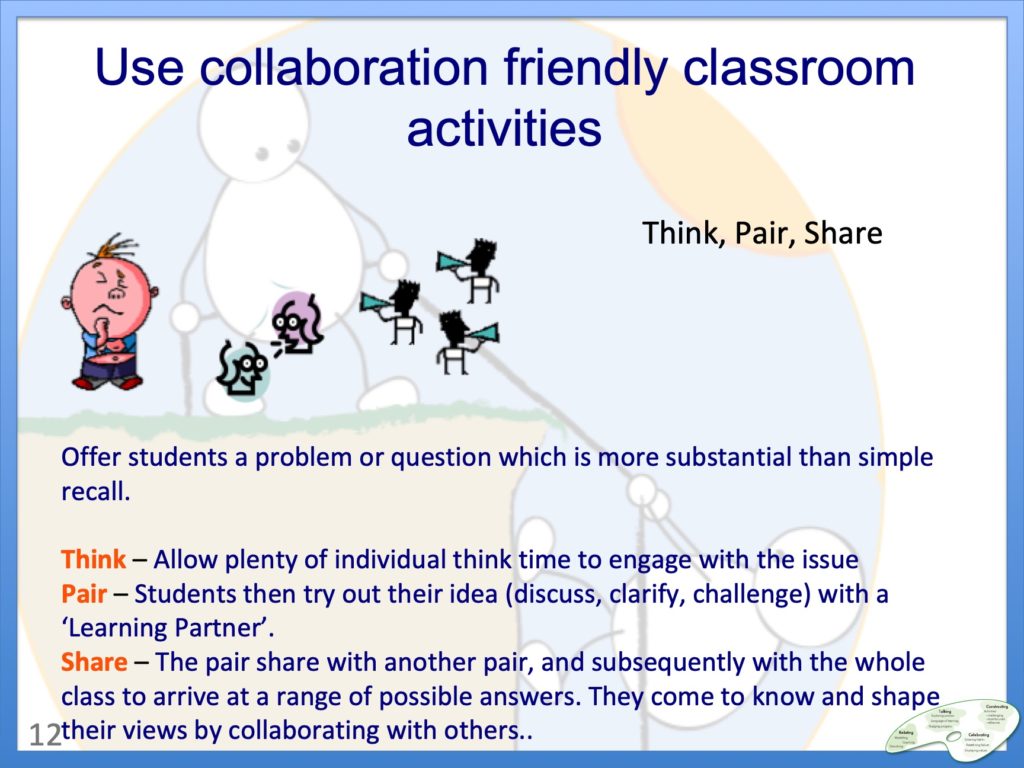
No comments yet.